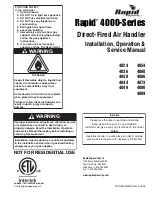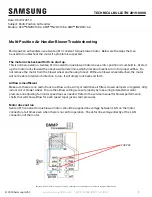
13
Ventilation theory and air handling units
In most cases, the pressure in ventilated spaces is equal to the atmospheric pressure of the
outside. This means that the air-flow delivered to a space equals the airflow brought back from a
space. Such spaces are described as neutral or balanced.
However, in mechanical ventilation systems the supply air and return air flows might be
sized differently, when necessary. In these cases, a building can be either pressurized or
depressurized:
●
Pressurized
:
The pressure within the ventilated space is positive (higher) compared to the
outside pressure. This means, a certain amount of air is exfiltrated from the
space through openings and cracks.
Examples are clean rooms, operation theatres etc.
●
Depressurized
:
The pressure within the ventilated space is negative (lower) compared to the
outside pressure. This means, a certain amount of air is infiltrated to the space
through openings and cracks.
Examples are kitchens, toilets, laboratories working with toxic substances etc.
2.4 Air handling units
Main components of air handling units
The main components of an air handling unit are shown in the following graphic.
Mixed air (MA)
Supply air fan
(SAF)
Supply air
(SA)
Outside air
(OA)
Return air
(RA)
Exhaust air
(EA)
Dampers
(D)
Dampers
(D)
Dampers
(D)
Cooling Coil
(CC)
Heating Coil
(HC)
Air handling unit (AHU)
Filter
(F)
Recirculated
air (CA)












































